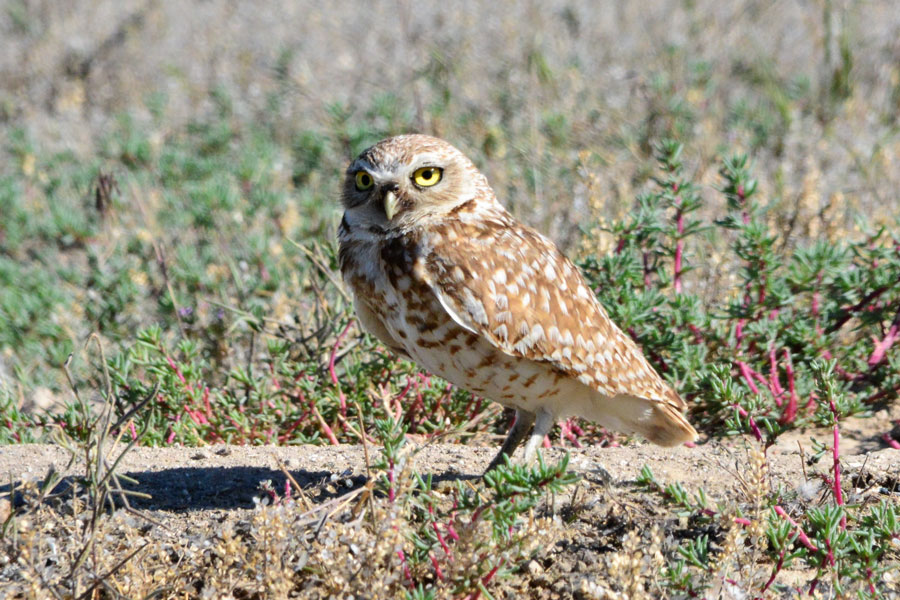The hawks attacked and the owls went AWOL
Published at
As I pulled into the area holding six Burrowing owl nests, only one adult bird could be seen of the 38 adults and young I had counted several days before. I scanned the area just as a Red-tailed hawk landed on a rock outcrop between two of the nests. It was wet and disheveled, looking as if it had been in some kind of an altercation. Then I noticed a few loose feathers flittering around in the slight breeze.
On closer inspection I located a pair of wings, a bloodied pile of feathers and two feet attached to small ham-like thighs. An adult hawk with what appeared to be a young one flew in, but thought better of battling with me over left-overs. On closer inspection, I found another kill sight about 20 yards from the nearest owl nest.
I had worried about this happening as some of the more aggressive owlets had begun to test out their wings by clumsily flying away from the nest, leaving them unprotected from the burrow before flying or walking back. Another problem was that the six nests were surrounded by a colony of 50 adult ground squirrels with young ones running all over. It was a summer-supply of food for the owls, but an attractant for other predators.
The hawks and I left, but I returned a couple of hours later and found several family groups enjoying the sunshine. But there was no activity near the family burrow that had apparently lost two members.
Just after sunrise next morning, I returned to the inactive burrow finding no activity. About 20 yards away were five immature owls on the lip of the burrow the male had used as his residence during the nesting activities. Two days later, four owlets and the adults were back to the original nest and the bachelor pad was abandoned.
It appeared that one of the babes had been harvested at the secondary burrow, so the family moved back as the change of address did not protect them. How often do we see this happen with humanoids when the change of address not only does not protect the family but exposes them to both old and new dangers.
In the last week, many of the young have increased their ability to fly and now visit other burrows where those parents try to keep the new “bad kids” from intermingling with their own. But the “best laid plans of mice and men,” or in this case parents, are often defeated by the consistent begging of the young. The young were not only trying out their new wings but were striking up new friendships.
One of the funniest actions I watched this week was a mother sitting on a sagebrush, calling and flapping her wings, apparently trying to entice one of the slow learners to attempt to fly to her. She even caught a beetle to try to bribe the youngster away from the lip of the burrow but to no avail.
After the high count of 38 from the six burrows, my last count was 31. The missing seven are all young and have probably fallen prey to four pairs of nearby Red-tailed, Swainson’s, Northern harriers and Ferruginous hawks. Hopefully enough will survive to increase the population so the rodent population will decrease and make for more humanoid enjoyment.
Living the Wild Life is brought to you by The Healing Sanctuary.







